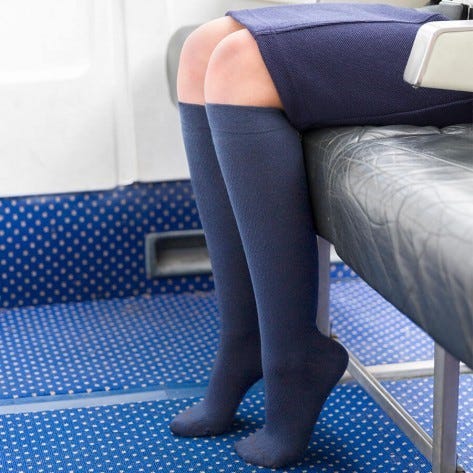A guide to compression socks
Discover the benefits of compression socks and how to choose the one that’s right for you.
What are compression socks?
Compression socks are specially designed to apply pressure to your lower legs which helps to maintain blood flow and reduce discomfort and swelling. In some cases, they can also help to prevent blood clots. They may be prescribed by your GP if you have a condition that causes poor blood flow to your leg such as varicose veins or if you’ve just had surgery.
What do the compression ratings mean?
Compression socks and stockings come in five main levels of compression. This refers to the amount of pressure (measured in millimetre of mercury or mmHg) applied to the leg. The higher the number, the greater the compression.
Light compression socks (less than 20mmHg) are preventative and can be worn by almost anyone. They can offer relief from tired, achy legs caused by long periods of standing or sitting as well as relief from mild ankle and foot swelling. Cosyfeet’s Silky Smooth Compression Socks are ideal for prolonged periods of inactivity as they help maintain regular blood flow. Our Energising Nylon Socks and Energising Cotton Socks can help to energise and revitalise fatigued and aching legs.
Moderate compression (15 to 20 mmHg) can help with minor leg swelling and can also help prevent DVT if you’re travelling long distance by train, coach or car. Cosyfeet’s Anti-DVT Socks have a compression value of 18mmHg.

Cosyfeet’s Anti-DVT socks are ideal if you’re travelling
How do compression socks work?
Blood in your veins works against gravity to flow back to the heart. Anything that impedes that flow—such as circulation problems or lack of movement - results in blood pooling in the veins of the lower legs or feet. This can lead to swelling, achiness and fatigue and predispose you to a venous clot.
By squeezing the leg tissues and walls of the veins, compression socks can help blood in the veins return to the heart. They can also improve the flow of the fluid that bathes the cells (referred to as lymph) in the legs. Improving the flow of lymph can help reduce tissue swelling. The socks may also improve comfort in some healthy wearers even if they don’t have a discernible health benefit. For example, improving the flow of blood and lymph flow may make legs feel less tired.
Is there anyone who shouldn’t wear compression socks?
It is always sensible to seek medical advice if you have suffered from blood clots, recently undergone major surgery or have known or suspected DVT, cellulitis, arterial disease, circulatory problems or diabetes. If you have swelling, check with a health professional that the compression isn’t too much for you.
